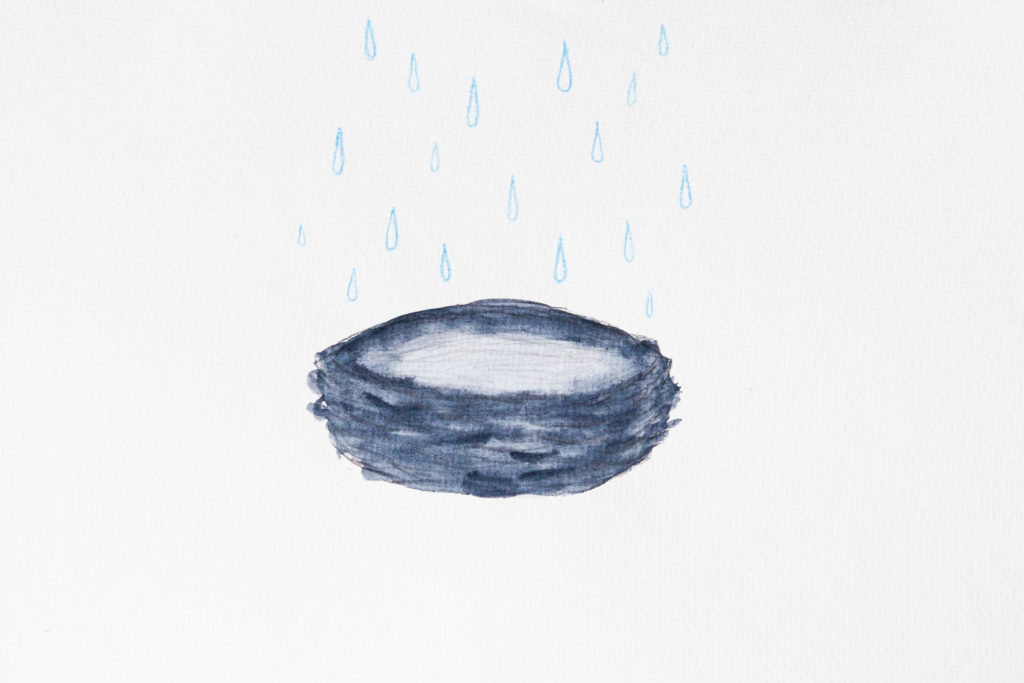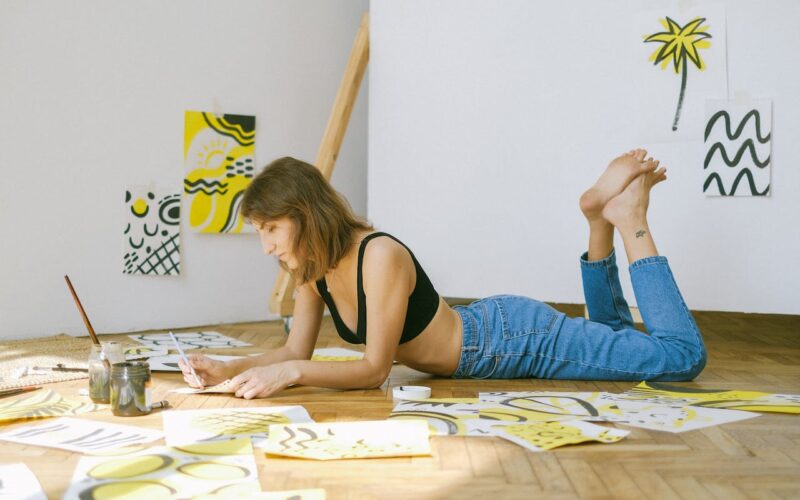Draw Pictures, Feel Better
When it comes to getting unstuck, drawing a picture of your ‘stuckness’ can provide surprising solutions to help you find your way again.
Image making is under-utilised in counselling and art therapy largely misunderstood by the general public. Many people think of art therapy as colouring books or mandalas, not realising that art has a profound healing effect when applied within a therapeutic context.
While art therapy is a broad field with many applications, the specific focus of this article is on the benefits of image-making within counselling.
Benefits of Image-Making In Counselling
In traditional counselling sessions, words and body language are the main information providers. Drawing pictures gives access to a broader array of information and resources. Insights can be gained that lie beyond what is possible in words alone.
Colours, shapes, forms, gesture all have associations and meanings that require and trigger creative thinking. The client’s imagination and ability to use metaphor are accessed, thus inviting them to step out of the usual narrative they share verbally.

Drawing a picture puts what’s on the inside on the outside. While words evaporate in the air, an image is a fixed form that allows exploration and manipulation from multiple angles. Gesture presents yet another opportunity for expressing emotion. Scribble drawings can be done fast, slow, flowing, jagged, the pen can be stabbed into the paper or dragged along slowly.
Between a therapist and client, an image allows, literally, a fuller picture of the client’s experience and a more in-depth discussion can result.
Image making is surprising and inspires confidence. When a client is supported to create something in a session, they are frequently surprised by the new ideas and ‘material’ that comes out of them and their subsequent ability to manipulate that material. This provides them with a sense of control and a reminder of their inner resourcefulness.
Overcoming The Client’s Fear Of Drawing
One barrier that keeps many people from trying image-making or expressive arts within counselling is the belief that they are not ‘good at art’. People fear they will be embarrassed by their stick figures or that a drawing task might leave them feeling incompetent.
It’s important to reassure clients that no art skill is required to make images in counselling. All a person needs to be able to do is put marks on paper and use colour, shape, line, form and gesture in an abstract and metaphorical way.
Alternatively, the therapist can lead the way by drawing an abstraction of their experience of what the client is saying and using it as a tool for clarification.
The process of image-making and the insight it generates is what matters, not the finished product. The image serves as a talking point for the counselling and is a symbolic object that the client can reflect on and manipulate as part of their process of meaning-making and change.
What A Session Looks Like
A simple starting point in counselling is to ask the client to draw an abstract image of what they are experiencing. This requires no artistic ability as the client can use colour, shape, relationships between forms, space and gesture to create a symbolic representation of what they are experiencing.
The counsellor asks non-judgemental, non-interpretive questions about the image to help the client gain a full understanding of their experience. Together they will look at the image from multiple perspectives. Basic questions such as ‘what do you see?’, ‘what is this blue part here?’ or ‘I notice you put this object in the corner, was that deliberate?’ all help the client reflect on the topics they’ve brought to the therapy session.
The client is then invited either to manipulate the image or create a new one based on the counselling goals. Elements can be removed, added, enlarged or shrunk. Colours can be changed and the image turned upside down. Paper can be cut, torn, burned, ripped apart and glued back together.
An image-based counselling session might involve therapist and client discussing a drawing of two giraffes on an A4 piece of paper. They discuss how big the giraffes are in relation to each other, how many spots each has, how close the giraffes are to each other and what it might be like if each giraffe had its own separate piece of paper or if they simply need a bigger piece of paper.
By the end of the session, the client has a stronger understanding of a relationship dynamic in their life, such as a relationship with a parent or partner, and what changes they might like to experiment with in that relationship.
Perhaps the client doesn’t want to be a giraffe anymore, maybe they want to be a bird. Or a tiger.

One of the biggest benefits is that the image can be changed
Once an image has been created, it can be changed. All elements that represent something personal to a client can literally be manipulated. New perspectives can be readily found. Again, this inspires confidence, curiosity and a sense of control for the client.
Image-making can be used at any point within a counselling process. It can serve as a form of witnessing, it is helpful for insight generation and it solidifies commitments to new trajectories.
Drawing can make it easier to express something that is difficult to talk about such as a traumatic experience. An image or metaphor can create distance when words feel too hard.
Image making is a good intervention for clients who are more visually/sensorially than verbally oriented in their cognitive functions. They may find it far easier to communicate through image and metaphor.
Image-making combines well with mindfulness training and there are many art-based interventions that encourage mindfulness.
Art-making at the end of a counselling session can ground the session, give it a sense of completion and provide the client with a physical reminder of something they gained from the session.
Art therapy techniques combine well with most other methodologies including CBT, ACT, family systems, depth psychology and client-centered therapy.
Images and visualisations solidify learning in counselling making it easier to retain and apply what has been gained.
When to proceed with caution
For the same reasons that image-making can make something easier to express, image-making can be confronting. What is experienced internally is suddenly in a concrete, symbolic form. The client’s creative brain is working extra fast to make connections and associations. It’s important not to overwhelm the client.
This is why it’s important the therapist is trained in art therapy so they understand how different materials and interventions affect the therapeutic process. From the size of the piece of paper to how hard or soft a pastel crayon is, all have different effects within therapy.
Using art to extend our capacities for growth and community
There is a vast array of applications for the arts within therapy. My aim is to see the arts used more frequently within psychotherapy (along with somatic approaches such as movement and breathwork). Educating the public about these benefits and overcoming the barriers to entry are essential parts of that process.
Additionally, my hope is that this would encourage a re-democratisation of the arts in everyday life allowing more people to access the profound effects the arts have for wellbeing, extending learning abilities, healing, connection and creating community.

About the author
Rachel Marsden is a creative coach and counsellor who incorporates the arts into her practice. She trained in art therapy in Australia and worked in mental health recovery before relocating to Berlin (for a second time) in 2016. She supports people to move through life transitions with grace, dignity, compassion and creativity.
The illustrations used in the article are hers.
